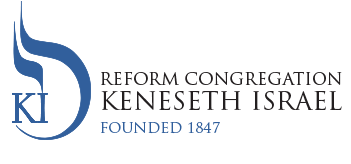This year Tu BiShvat (15th of Shevat) or Jewish Arbor Day takes place on
Monday, February 10, 2020. Its origins are found in the discussions of the
early rabbis about the Jewish calendar. The followers of Shammai declared
that the first day of the month of Shevat to be “the birthday of the trees.”
However, the followers of Hillel argued that the birthday of trees was on the
15 th of Shevat. Tradition decided in favor of Hillel and Tu BiShvat became a
Jewish holiday which in time developed its own special Seder and in Israel,
following the lead of the Jewish National Fund, a special day on which
millions of trees have been planted over the decades in the Jewish State.
This year is no different and brigades of students and citizens will set out
across Israel to add new trees to Israel’s many national forests.
Tu BiShvat, however, is just the beginning of the Jewish connection to the
modern environmental movement. The connection starts with the opening of
the Torah, which portrays God as the Creator of the universe and everything
in it. The Torah speaks about the vast spectrum of living plants and assigns
humanity the role of partnering with the cosmic gardener who is the ultimate
farmer, forester and environmentalist.
Ironically, organized Judaism’s relationship with the modern environmental
movement did not start on a very good note. In 1966, medieval historian
Lynn Townsend White, Jr. (1907-1987), who had taught at Princeton and
UCLA among other places, gave a lecture on “The Historic Roots of Our
Ecologic Crisis” which blamed the Judeo-Christian tradition for modern
attitudes toward exploiting nature for short-term benefits and corporate
indifferentism to the environment. Religionists of all faiths fought back
emphasizing the idea of natural stewardship and partnership with the
Creator. In some countries, radical Green politics is still tinged with anti-
Semitism.
Jewish environmentalists, on the other hand, saw no conflict between
Judaism and good stewardship and were eager to point out ancient Jewish
laws like kindness to animals, non-destruction of fruit trees during a siege
and sh’mitah (non-planting years) as indicative of Judaism’s inherent pro-
environmentalism. Of course, the greatest evidence of Judaism’s “green-
ness” is the Sabbath itself, a weekly tribute to the Creator through rest,
reverence and study. The contemporary Reform Movement has taken a
number of strong positions on Climate Change, Clean Water and
Environmental Health to name just a few. In 1983, the Reform movement in
Israel created Kibbutz Lotan in the Negev near the border with Jordan and
mandated it to create new and adaptive measures to create a sustainable
food supply in as green a matter as possible. At KI, too, we have an active
Green Committee which both educates and takes practical steps to make the
synagogue and our congregation as “green” as possible.
This year on Tu BiShvat, we should take time to individually assess our
relationship with the environment. Do we recycle? Have we taken steps to
reduce our personal carbon footprint? Could we be doing more to reduce our
non-biodegradable waste? Are we working toward protecting natural
resources from pollution or undue exploitation? Are we involved in reducing
the threat of environmental poisoning to vulnerable populations? Are we light
green, medium green or dark green in our own lives?
Tu BiShvat and Shabbat are times to celebrate creation, nature and life.
Preserving our planet, however, is a mandate and a challenge that occurs
and reoccurs every day. On this Tu BiShvat, let us self-assess and move
forward together.
Shabbat Shalom and a Happy Tu BiShvat
Rabbi Lance J. Sussman, Ph.D.
